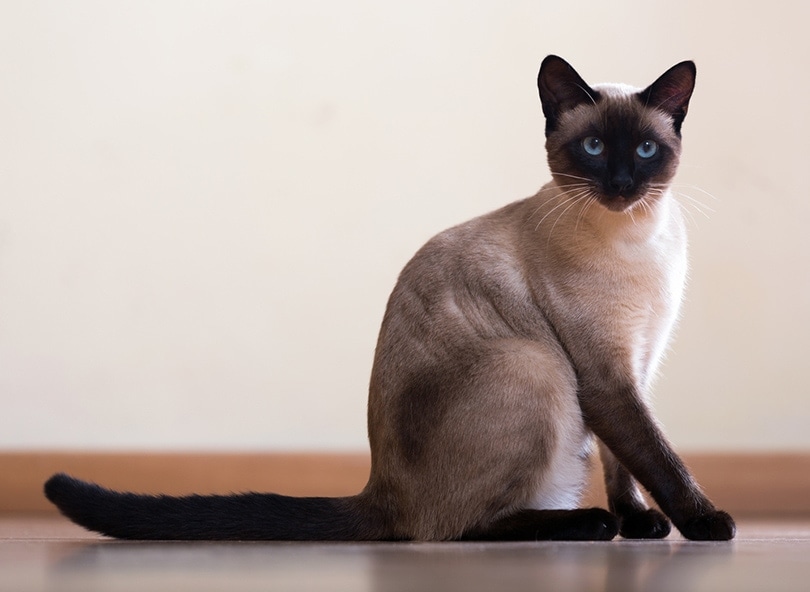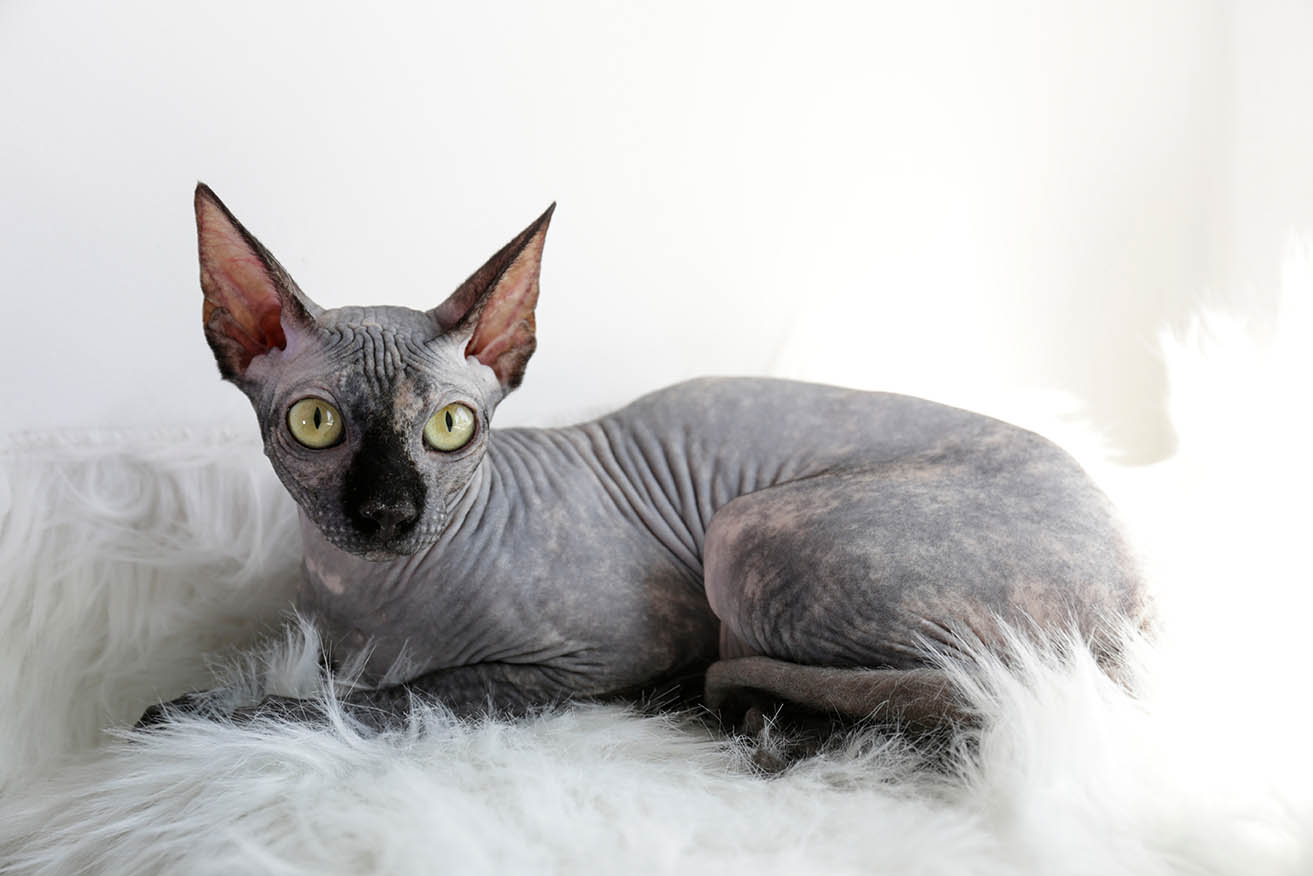Conjunctivitis in Cats: Vet-Approved Causes, Signs & Treatments

Updated on
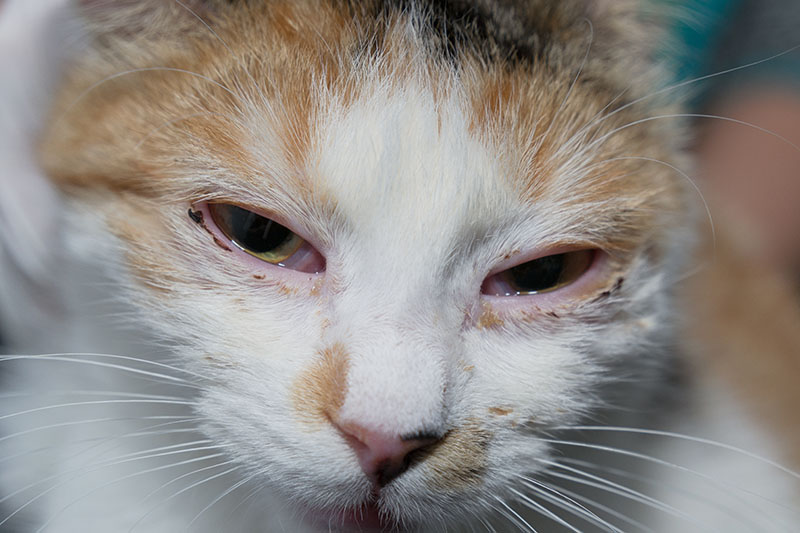
There are many bacteria and viruses that most cats will experience at least once in their lives. These viruses can be highly contagious and cause a problem to several cats at a time, especially if you live in a multi-cat home. While the infections can be treated with proper medication, some of them tend to develop further and even cause conjunctivitis.
Conjunctivitis is an inflammation of the conjunctiva, the mucous membrane which lines the eyeball. This membrane is usually not visible and has a pale pink color, and inflamed conjunctiva can become very swollen and red. It may cause pain and discomfort to your cat, requiring immediate attention and treatment.
Continue reading the article to find out all about this uncomfortable condition in cats, what may be the cause, and how to treat it.
What Is Conjunctivitis?
Conjunctivitis is a common eye disorder. In cats, the conjunctiva lines the nictitating membrane (also called the third eyelid), the eyelids, and the white part of the eyeball (the sclera). While the conjunctiva has several purposes, its main function is to provide the eye with an important part of the tear film and act as a defensive system against eye infections.
Conjunctivitis is also known as “pink eye” because of the way it presents itself through the swollen and red conjunctival membrane. Conjunctivitis can easily be recognized in cats because this membrane, when healthy, is not visible and has a pale coloring. Many cats experience this condition at least once in their lives, and while it tends to be quite painful, there are ways to treat it.
Conjunctivitis is more common in younger cats, all breeds can acquire it, and it is not an inheritable condition. If a cat gets an infection once, that does not mean they cannot get it again. In fact, after infection with one of the major viruses (feline herpes virus-1), most cats will remain infected for life, meaning they will carry the virus. Infectious conjunctivitis can spread fast in a multi-cat household, as the older carrier cats can transmit the disease to younger ones.
What Are the Signs of Conjunctivitis?
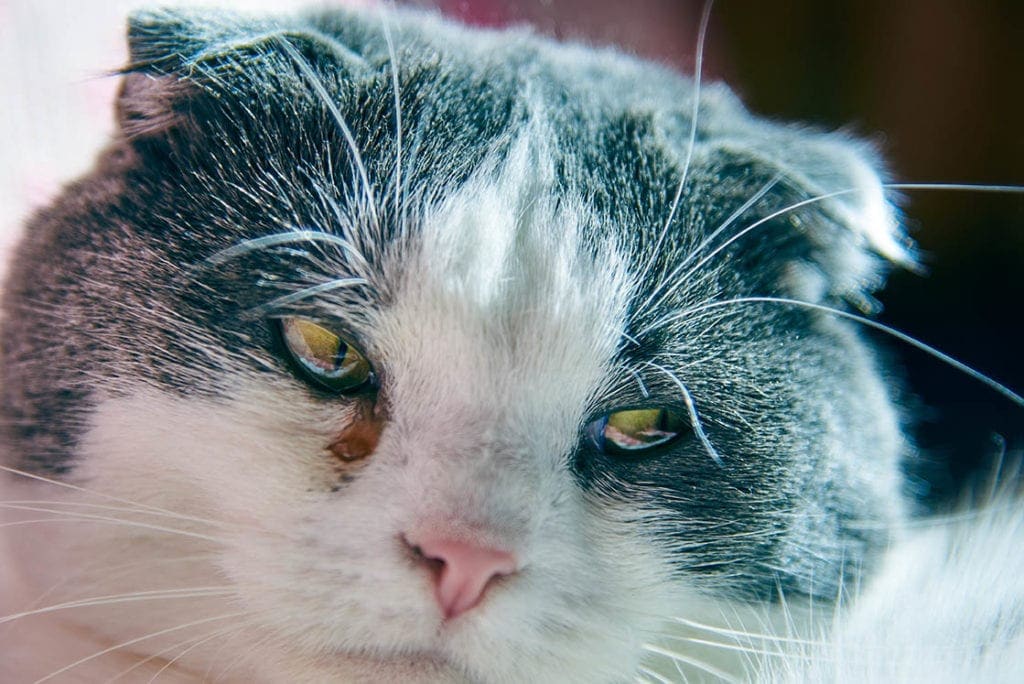
Conjunctivitis in cats has many shapes and forms, and the signs can range from mild to severe. Since the conjunctival tissues are inflamed, swelling is the most common sign and the one you’ll notice first. Sometimes, you may notice mucous forming around the eye and clear, yellowish, greenish, or bloody discharge. The eyes will tear up and water excessively, causing your cat to squint or even keep one eye closed. More severe cases will cause the conjunctival tissue to be so inflamed and swollen that it will cover the eyelid partially or entirely.
The important thing when noticing these signs of conjunctivitis is to take your cat to the vet as soon as possible. Any delay in doing so will result in the inflammation worsening drastically and even cause your cat a significant amount of pain and discomfort.
What Are the Causes of Conjunctivitis?
The two types of conjunctivitis, depending on its cause, are infectious and noninfectious. Below you can read more about these two common causes of conjunctivitis.
Infectious Diseases That May Cause Conjunctivitis
There are many infectious diseases your cat may have that can eventually lead to conjunctivitis. They are easily transmitted from one cat to another and are the most common causes of pink eye. Certain bacteria, viruses, and rarely, fungi can be the initial cause of inflammation. One of the most common viral infections and causes of conjunctivitis in cats are feline herpesvirus-1 and calicivirus. Bacteria that can cause these illnesses in cats are mainly Chlamydophila felis and Mycoplasma.
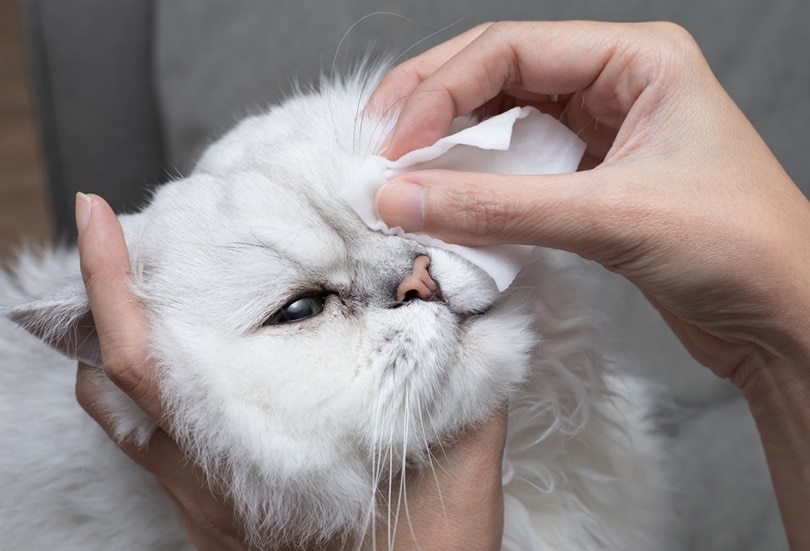
Noninfectious Diseases That May Cause Conjunctivitis
Aside from the infectious diseases that cats transmit to one another, causing conjunctivitis, there are other, noninfectious conditions that can affect a cat’s conjunctiva. Allergies, environmental irritants, and eyelid problems can all affect a cat’s eye health. A specific condition called entropion may occur when an eyelid (usually the lower one) rolls inward, causing painful friction with the eyeball. The breeds that are most susceptible to this condition are Persian cats and Himalayan cats.
How Do I Care for a Cat with Conjunctivitis?
Your first step towards the most effective treatment plan is to take your cat to the vet for an examination. Once the vet sets the diagnosis for conjunctivitis and the potential causes, they can create and advise a certain type of treatment. The most common way to care for a cat with conjunctivitis is to apply a series of ophthalmic preparations containing antibiotics to fight the infection. The treatment may also include anti-inflammatory drugs, which will reduce the painful inflammation of the conjunctiva. Your vet can prescribe either eye drops for your cat or ointment that’s applied directly into the eye. Depending on the severity of the infection, local treatment can be followed by a series of injections. Your vet may also recommend a protective collar to prevent any damage to the eyeball caused by your cat attempting to scratch or rub in case of discomfort.
The vet will need to take into consideration the type of conjunctivitis in order to prescribe adequate treatment for it.
- Infectious conjunctivitis caused by Herpesvirus: The treatment will depend on the severity of the clinical signs and the number of times that your cat has been infected with this virus. Treatment may range from lubricating drops and pain relief to antivirals and antibiotics. Your vet may also prescribe supplements like L-lysine and probiotics
- Infectious conjunctivitis caused by bacteria: For conjunctivitis that is caused by a bacterial infection such as Chlamydophila or Mycoplasma, the vet will prescribe Tetracycline ophthalmic ointment or oral antibiotics.
- Noninfectious conjunctivitis caused by allergies: Conjunctivitis that is caused by allergies will need to be treated with corticosteroid drops or ointment or other anti-allergy medications, such as antihistamines, and frequent eye cleaning.
Frequently Asked Questions (FAQs)
What can you expect when taking your cat for an examination?
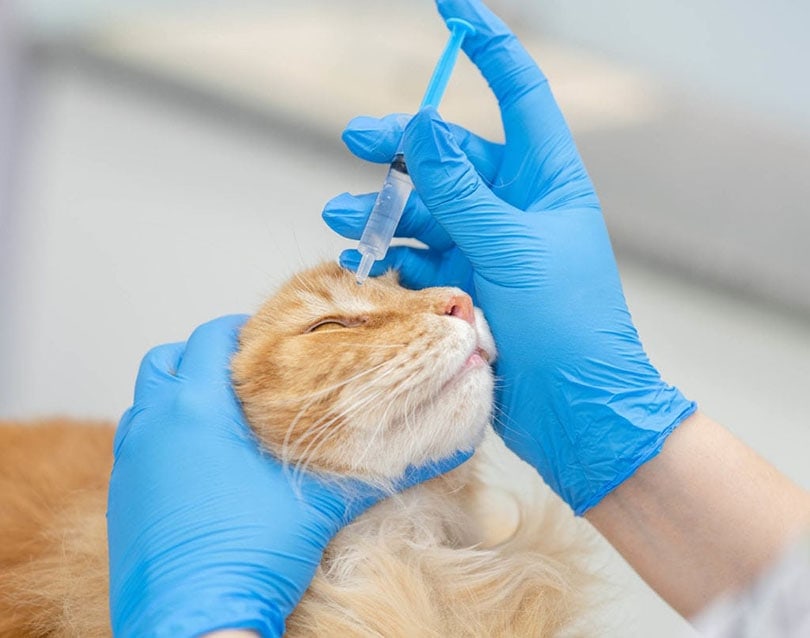
Once you take your cat to the vet, they will begin the examination by checking for any foreign bodies in the eye. Other conditions your vet will need to exclude before diagnosing conjunctivitis are blocked tear ducts, various injuries, and corneal ulcers. Usually, the vet will prescribe anti-inflammatory medication right away to reduce the pain and inflammation. Most viral and bacterial infections will resolve in 5 days to a week, while more severe cases will need to have further testing done. Your vet may do specific biopsies, and scrapings, measure the intraocular pressure, and have the cat’s blood tested.
How long will it take my cat to heal?
With the right medication and treatment, most cats will exhibit drastic improvement in a matter of days. It is important to continue with the treatment until the end, even if conjunctivitis has resolved. Chronic causes may require prolonged treatment, from several weeks up to a month.
Is conjunctivitis contagious?
The most common cause of conjunctivitis is a viral infection which can be highly contagious and usually spreads from one cat to another. Most of these viruses are only contagious to other cats, more common in multi-cat households, while they cannot be transmitted to other animals or humans.
Can I prevent my cat from getting conjunctivitis?
Yes, vaccinating your cat is an important measure for preventing or mitigating viral conjunctivitis. Allergic conjunctivitis can also be prevented by minimizing exposure to allergens. Your vet can help you with these strategies.
Conclusion
Hopefully, you should now understand the severity of this condition and the importance of correct treatment. It is necessary to notice the signs in time and take your cat to the vet as soon as possible. Conjunctivitis can be treated easily once the vet determines an infectious or noninfectious cause. Since conjunctivitis is usually contagious, it won’t be long before all your cats suffer from this painful condition.
Featured Image Credit: Todorean-Gabriel, Shutterstock




